

Zitierweise / cite as:
Payer, Alois <1944 - >: Chronik Thailands = กาลานุกรมสยามประเทศไทย. -- Chronik 1901 (Rama V.). -- Fassung vom 2016-12-03. -- URL: http://www.payer.de/thailandchronik/chronik1901.htm
Erstmals publiziert: 2013-10-05
Überarbeitungen: 2016-12-03 [Ergänzungen] ; 2016-09-07 [Ergänzungen] ; 2016-08-26 [Ergänzungen] ; 2016-02-26 [Ergänzungen] ; 2015-11-24 [Ergänzungen] ; 2015-10-10 [Ergänzungen] ; 2015-09-14 [Ergänzungen] ; 2015-07-03 [Ergänzungen] ; 2015-06-24 [Ergänzungen] ; 2015-06-05 [Ergänzungen] ; 2015-05-12 [Ergänzungen] ; 2015-04-10 [Ergänzungen] ; 2015-02-24 [Ergänzungen] ; 2015-02-15 [Ergänzungen] ; 2015-01-12 [Ergänzungen] ; 2014-12-31 [Ergänzungen] ; 2014-12-16 [Ergänzungen] ; 2014-10-20 [Ergänzungen] ; 2014-04-15 [Ergänzungen] ; 2014-03-26 [Ergänzungen] ; 2014-03-05 [Ergänzungen] ; 2013-11-26 [Ergänzungen] ; 2013-11-07 [Ergänzungen] ; 2013-10-31 [Ergänzungen] ; 2013-10-25 [Ergänzungen] ; 2013-10-14 [Ergänzungen]
©opyright: Dieser Text steht der
Allgemeinheit zur Verfügung. Eine Verwertung in Publikationen, die über übliche
Zitate hinausgeht, bedarf der ausdrücklichen Genehmigung des Herausgebers.
Dieser Text ist Teil der Abteilung
Thailand von
Tüpfli's Global Village Library
ช้างตายทั้งตัวเอาใบบัวปิดไม่มิด
|
Gewidmet meiner lieben Frau Margarete Payer die seit unserem ersten Besuch in Thailand 1974 mit mir die Liebe zu den und die Sorge um die Bewohner Thailands teilt. |
|
Bei thailändischen Statistiken muss man mit allen Fehlerquellen rechnen, die in folgendem Werk beschrieben sind:
Die Statistikdiagramme geben also meistens eher qualitative als korrekte quantitative Beziehungen wieder.
|
1901 - 1909
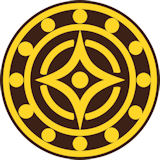
Inthawarorot Suriyawong - เจ้าอินทวโรรสสุริยวงศ์ (1859 - 1909) ist König von Chiang Mai (เชียงใหม่)
Abb.: Inthawarorot - เจ้าอินทวโรรสสุริยวงศ์
[Bildquelle: th.Wikipedia. -- Fair use]Er nimmt als König jährlich Geld und Sachleistungen im Wert von 200.000 Baht ein. Er ist aber machtlos, da die ganze Macht beim Kommissar Siams in Chiang Mai liegt.
1901

Der Chedi (เจดีย์,) von That Phanom (วัดพระธาตุพนม) ist eine Ruine
Abb.: Lage von That Phanom (วัดพระธาตุพนม)
[Bildquelle: OpenStreetMap. -- Creative Commons Lizenz (Namensnennung, share alike)]
"By the beginning of the twentieth century, the stupa had fallen into disrepair. The chronicler of That Phanom recalled: "In the year 2444 (1901), the year of the Ox, the Fifth King [Chulalongkorn] of the Chakri Dynasty ruled at Krung Rattanakosin (Bangkok). The That Phanom shrine had become a dilapidated ruin. ... No one dared to climb or even step upon anything because of the fear that a person doing so could be punished [by the deities]. The villagers firmly believed this, so they brought flowers, candles and incense to worship without daring to touch anything in the compound, even the large attractive sanctuary built by Chao Anou [ສົມເດັຈພຣະເຈົ້າອານຸວົງສ໌ - เจ้าอนุวงศ์, 1767 - 1829], of which it was said that anyone entering it would turn completely yellow like gold. As a result, this building was practically dilapidated by this time [1901].""
[Zitiert in: Mayoury Ngaosyvathn [ມະຍຸຣີ ເຫງົ້າສຼີວັດທະນາ] ; Pheuiphanh Ngaosyvathn [ເຜີຍພັນ ເຫງົ້າສຼີວັດທະນາ] <1946 - >: Paths to conflagration : fifty years of diplomacy and warfare in Laos, Thailand, and Vietnam, 1778-1828. -- Ithaca, N.Y. : Cornell Univ., 1998. -- 270 S. ; 26 cm. -- (Studies on Southeast Asia ; 24). -- ISBN 0-87727-723-0. -- S. 74, Anm. 58]
1901

"The respite he [Mönchs-Prinz Vajirañāṇavarorasa - วชิรญาณวโรรส, 1880 - 1921] had requested from the king, if it was granted at all, did not last long, for in early 1901 he was handed another royal commission, this time to investigate a bumptious commoner who had presumed to write a biography of the late supreme patriarch [Somdet Phra Maha Samana Chao Krom Phraya Pavares Variyalongkorn - สมเด็จพระมหาสมณเจ้า กรมพระยาปวเรศวริยาลงกรณ์, 1809 - 1892] for distribution at his cremation. At stake was the reputation of an eminent Dhammayut monk [ธรรมยุติกนิกาย] who had been an early follower of Mongkut in his reform of Sangha discipline, and Vajirañāṇa, as patriarch of the reform order, was the custodian of Dhammayut history. Along with another prince and nobleman, he interviewed witnesses, collected testimony, and wrote a lengthy report critical of the biographer’s facts and method." [Quelle: Vajirañāṇavarorasa [วชิรญาณวโรรส] <1880 - 1921>: Autobiography : the life of Prince-Patriarch Vajirañāṇa of Siam, 1860-1921 / translated, edited, and introduced by Craig J. Reynolds. -- Athens : Ohio University Press, 1979. -- 86 S. : Ill. ; 24 cm. -- ISBN 0821403761. -- Originaltitel: พระประวัติตรัสเล่า. -- S. XLI]
1901
Es erscheint die Gesetzessammlung als Handbuch für Richter:
กฎหมายราชบุรี [Ratchaburis Gesetze] / hrsg. von Prinz Ratchaburi [Prince Rabhibhadhanasakdi - รพีพัฒนศักดิ์, 1874 - 1920]
1901 - 1911

Phraya Akharaj Varathorn (พระยาอรรคราชวราทร - ภัสดา บุรณศิริ, 1860 - ) ist der erste in Washington D.C. stationierte Gesandte Siams in den USA. Bisher waren die Botschafter in London (GB) stationiert.
Abb.: Phraya Akharaj Varathorn
1901
Tod von Phraya Vichienkhiri (Chom Na Songkhla) (พระยาวิเชียรคีรี (ชม ณ สงขลา) 1854 - 1901), Gouverneur von Songkhla (สงขลา). Damit endet die 126jährige politische Herrschaft des Hao-Klan (吴 = na Songkhla - ณ สงขลา) in Songhkla.
Abb.: Lage von Songkhla (สงขลา)
[Bildquelle: OpenStreetMap. -- Creative Commons Lizenz (Namensnennung, share alike)]
Abb.: Phraya Vichienkhiri (Chom Na Songkhla) (พระยาวิเชียรคีรี (ชม ณ สงขลา))
1901
Einrichtung einer Quarantänestation für Schiffe auf Koh Phra.
1901
Einrichtung eines Medikamenten-Depots und eines Impflaboratoriums.
1901
In der Siam Free Press wird häufig über die Prostitution in Bangkok geklagt sowie über das Fehlen von polizeilicher oder medizinischer Kontrolle der Prostituierten.
1901
Der Gouverneur von Trang (ตรัง), Khaw Sim Bee (許心美 / คอซิมบี้, 1857 - 1913), bringt aus Sumatra Samen des Kautschukbaums (Hevea brasiliensis Müll.Arg.) mit. Er lässt damit 36 Rai (58.000 m²) Land anpflanzen. Er bewirkt eine Gesetzesänderung, die es den Bauern erlaubt, im Dschungel Neuland zu roden und mit Kautschukbäumen zu bepflanzen. Das Land geht damit in das Eigentum der Bauern oder Unternehmer über. Damit wird riesiger Raubbau am Primärwald initiiert.
Abb.: Lage von Trang (ตรัง)
[Bildquelle: OpenStreetMap. -- Creative Commons Lizenz (Namensnennung, share alike)]
Abb.: Kautschukbaum (Hevea brasiliensis Müll.Arg.), Südthailand, 2004
[Bilkdquelle: Blue Plover / Wikimedia. -- Creative Commons Lizenz (Namensnennung, share alike)]
Abb.: Kautschukproduzenten
[Bildquelle: Albert Perry Brigham , Charles T. McFarlane: Essentials of geography, 1920]
1901

Der britische Beamte in Penang, Charles Walter Sneyd-Kynnersley (1849 - 1940) besucht Phuket. Er schreibt über die nicht vorhandene Telegrafenverbindung:
Abb.: Lage von Phuket (ภูเก็ต)
[Bildquelle: Scottish Geographical Magazine, 1886. -- Public domain]
"We did not ask to telegraph anywhere as we had been told that the telegraph posts and wires which run along the new road lead nowhere." [Zitiert in: Mackay, Colin <1936 - >: A history of Phuket and the surrounding region. -- Bangkok : White Lotus, 2013. -- 438 S. : Ill. ; 25 cm. -- ISBN 978-974-480-195-1. -- S. 334]
1901
Abb.: Gymkhana Club Chiang Mai (เชียงใหม่, gegründet 1898), 1901
1901
Abb.: Reisen auf dem Elefanten in Saraburi (v), 1901
Abb.: Lage von Saraburi (สระบุรี))
[Bildquelle: CIA. -- Public domain]
1901
Abb.: Bangkok Book Club (บูคคลัภย์), 1901
1901

Abb.: Adelige mit Dienerinnen, Chiang Mai (เชียงใหม่), 1901
1901
Abb.: Frauen und Kinder eines Bergvolks, Chiang Rai (เชียงราย), 1901
Abb.: Lage von Chiang Rai (เชียงราย)
[Bildquelle: CIA. -- Public domain]
1901
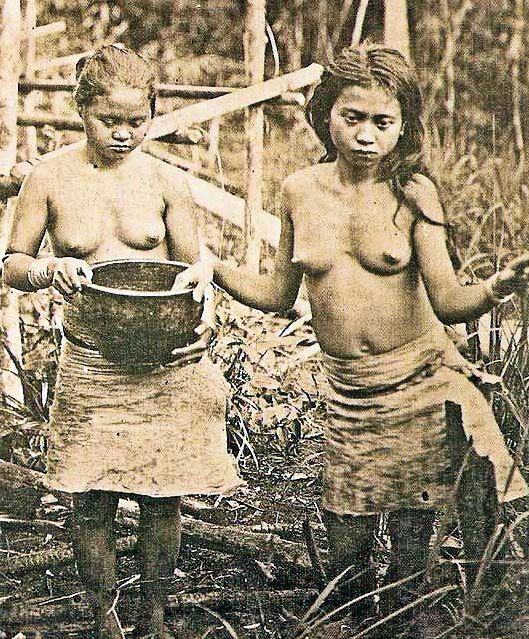
Abb.: Mlabri-Mädchen (มลาบรี) , Nan (น่าน), 1901
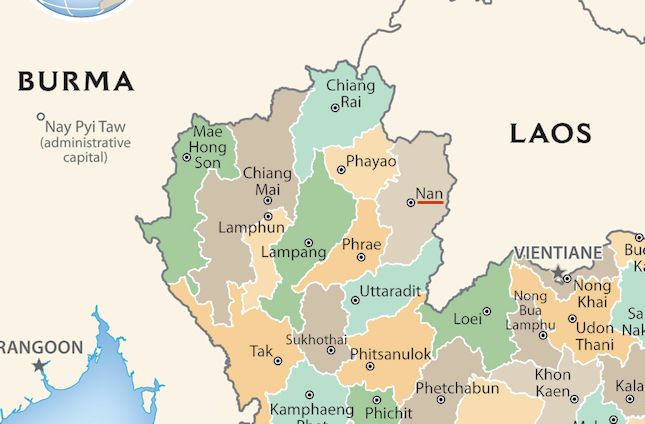
Abb.: Lage von Nan (น่าน)
[Bildquelle: CIA. -- Public domain]
1901

Abb.: Königliche Palastgarde, 1901
1901

Prinz Sommot Amarabandhu (1860 - 1915) beginnt mit der Sitte, bei Kremationen als verdienstliches Werk gedruckte Bücher und Broschüren zu verteilen. So werden in der Folgezeit viele ältere Texte erstmals gedruckt.
1901
Es erscheint:
ทิพากรวงศ์ <เจ้าพระยา> [Thipakorawong = ขำ บุนนาค - Kham Bunnag] <1813 - 1870>: พระราชพงศาวดารกรุงรัตนโกสินทร์รัขกาลที ๑ [Eine Königschronik von Bangkok während der Ersten Herrschaft] / [fertiggestellt und hrsg. von ดำรงราชานุภาพ <สมเด็จพระเจ้าบรมวงศ์เธอ กรมพระยา> [Damrong Rajanubhab, 1862 - 1943]. -- Bangkok : Bamrungnunkunlakit, [1901]. -- 278 S.. -- Das Manuskript von Kham Bunnag wurde 1869 fertiggestellt.
Abb.: Einbandtitel
1901
Bangkok hat 2.066 Polizisten (davon sind 270 indische Sikh) + 250 private Wachmänner. Sikh sind als Polizisten gefragt wegen ihrer imponierenden Körpergröße.
1901

Der britische Bergabauingenieur in Phuket, W. Walter Burke, über die Nachkommen von Portugiesen, die in Phuket (ภูเก็ต) leben:
"They are as a rule fairer than the Siamese ... the men have more hair on the face and often large mustachios. They do not profess Buddhism and appear to be without any religion ... but they do not work on Sundays ... their numbers are now very small." [Zitiert in: Mackay, Colin <1936 - >: A history of Phuket and the surrounding region. -- Bangkok : White Lotus, 2013. -- 438 S. : Ill. ; 25 cm. -- ISBN 978-974-480-195-1. -- S. 212]
1901 - 1903

Antony Wladislas Klobukowski (1855 - 1934) ist französischer Gesandter (Ministre plénipotentiaire) in Siam.
1901
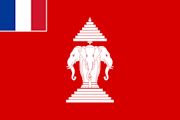
Chao Lek (ເຈົ້າເດັກ ?), ein laotischer Prinz im Dienst der französischen Gesandtschaft in Bangkok, reist durch Siam, um Laoten zur Übersiedlung nach Laos zu bewegen. Insgesamt siedeln ca. 2000 Familien (8000 Personen) nach Laos um.
1901

Gründung des französisch-kolonialistischen Comité de l'
Asie française. Es gibt 1901 - 1940 das Bulletin du Comité de l’Asie française heraus. Herausgeber: Robert de Caix de Saint-Aymour (1869 - 1970). Obwohl stark an Siam interessiert, zeigt das Bulletin kein Annexionsbegehren.
Abb.: Titelblatt
"Robert de Caix de Saint-Aymour, né le 5 février 1869 à Paris et mort le 12 mars 1970 dans la même ville, est un vicomte, journaliste, homme politique, écrivain et diplomate français. Il est le fils aîné de l'historien et archéologue Amédée de Caix de Saint-Aymour (1843 - 1920). Biographie
Robert de Caix de Saint-Aymour vécut son enfance dans le domaine familial du château d'Ognon. Il étudia à l’École libre des Sciences politiques de la rue Saint Guillaume à Paris. Il s'intéressa très tôt à la politique. Ayant vécu son enfance dans un pays humilié par la défaite de la Guerre de 1870 et la perte de l'Alsace et la Lorraine, il participa activement à une image de la France dans le monde. De 1898 à 1909, il a effectué de nombreux voyages en Asie et a été promu en 1901, rédacteur en chef du "Bulletin du Comité de l'Asie française". Au début des années 1900, il se lie à Philippe Berthelot (1866 - 1934), secrétaire général du Quai d'Orsay, qui lui ouvre les portes du ministère des Affaires étrangères.
Il intègre l’équipe du quotidien national le Journal des Débats où il est chargé des questions diplomatiques. C’est là, probablement sous l’égide de son directeur Georges Patinot (1884-1895) que Robert de Caix de Saint-Aymour prend contact avec tous les ténors de l’expansion coloniale française. À partir de 1896-1897, il devient l’un des chroniqueurs attitrés de l’organe principal du parti colonial en se spécialisant plus particulièrement ses propres voyages, puis il se voit chargé des chroniques diplomatiques. Comme tous les membres du réseau colonial français, il est membre de plusieurs organismes coloniaux comme la Société de géographie de Paris, la Société d’histoire des colonies françaises, la Ligue coloniale française, le Comité France-Amérique ou le Comité de l’Océanie française.
Robert de Caix de Saint-Aymour est une des personnalités historiques ayant participé à la naissance du mandat français en Syrie et du mandat français au Liban dans les années 1920 sur une partie de l'ancien territoire de l'Empire ottoman au lendemain de la Première Guerre mondiale. Il fut un membre éminent du Parti colonial français qu'il fit évoluer de sa situation essentiellement « Africain » au temps du magistère d’Eugène Étienne (1844 - 1921) pour devenir plus clairement « Asiatique » ou « Syrien » sous l’impulsion de Robert de Caix. Défenseur farouche du mandat de la France en Syrie, il est choisi pour devenir le collaborateur civil du général Gouraud (Henri Joseph Eugène Gouraud, 1867 - 1946), nouveau haut-commissaire en Syrie et au Liban en 1919. Robert de Caix, avant d'être nommé secrétaire général du Haut-Commissariat à Beyrouth (بيروت), il a été chargé par Georges Clemenceau (1841 - 1929) de traiter des questions du Moyen-Orient avec l'émir Fayçal Ier d'Irak (1885 - 1933) ( فيصل بن الحسين الهاشمي), (chef du gouvernement arabe de Damas), pour contrer les ambitions anglaises pris en charge entre autres par le colonel Lawrence d'Arabie (1888 - 1935). On doit à Robert de Caix la paternité de la politique française au Levant comme la structure politique du mandat français. Quand le général Gouraud quitte la Syrie en 1923, Robert de Caix pense être le mieux placé pour succéder à Gouraud, mais le gouvernement français lui préfère le général Weygand (Maxime Weygand, 1867 - 1965). Il est alors nommé délégué français à la Commission permanente des mandats à la Société des Nations à Genève de 1924 à 1939.
En 1926, Robert de Caix a découvert le peuple acadien lors d'un de ses nombreux voyages. Il a participé à de nombreuses réunions afin d'établir de nouveaux liens entre la France et l'Acadie et participa avec l'historien français Émile Lauvrière (1866 - 1954) à la fondation du Comité France-Acadie.
Il meurt à Paris le 12 mars 1970 à l'âge de 101 ans."
[Quelle: http://fr.wikipedia.org/wiki/Robert_de_Caix_de_Saint-Aymour. -- Zugriff am 2015-01-09]
1901

Es erscheint der Lobgesang auf französischen Kolonialismus und Imperialismus:
Lhomme, H.-F.: Le gouvernement des amiraux en Cochinchine (1861-1879). -- Paris : Larose, 1901. -- 122 S.
1901

Es erscheint:
Reinach, Lucien de <1864 - 1909>: Le Laos. -- Paris : Charles, 1901. -- 2 Bde : Ill.
Abb.: Titelblatt
Abb.: Carte politique de l'Indo-Chine en 1901
[a.a.O., Bd. 1, Pl. V]
Abb.: Carte des voies de communication fluviales, postales, télégraphiques et chemins de fer en 1900
[a.a.O., Bd. 1, Pl. VI]
Abb.: Tatouages de poitrine de Birman ou de Lu (couleur bleu et rouge)
[a.a.O., I, S. 186]
Abb.: a, a': Tatouages de femmes younes ; b: Tatouages de mains de femmes khas (couleur bleue) ; c, c': Tatouages d'esclaves
[a.a.O., I, S. 187]
Abb.: Tatouage de cuisse (couleur bleue), Laotien (ou Ventre blanc)
[a.a.O., I, S. 245]
Abb.: Tatouage complet (couleur bleue), Youn (ou Ventre noir)
[a.a.O., I, S. 250]
Abb.: Oreilles de Youns, Lus et Khas
[a.a.O., I, S. 253]
1901


Festnahme eines britischen Schiffs unter französischer Flagge, das 10.000 Tael (兩, ca. = 3700 kg) Opium (Wert: 50.000 Baht) schmuggelt. Da der Schmuggler ausländische Papiere hat, steht er nicht unter siamesischer Gerichtsbarkeit.
1901
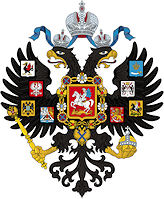
Beeindruckt von einer Aufführung königlich-siamesischer Schauspieler in St. Petersburg (Санкт-Петербург, Russland) im Jahr 1900 schafft Léon Bakst (Лев Самойлович Бакст) folgendes Gemälde:
Abb: Bakst, Léon [Бакст, Лев] <1866 - 1924 >: Сиамский священный танец ["Siamesischer heiliger Tanz"], 1901
"Léon Bakst (russisch Лев Самойлович Бакст, Lew Samoilowitsch Bakst, ursprünglich Лейб-Хаим Израилевич Розенберг / Leib-Chaim Israilewitsch Rosenberg; * 27. April / 9. Mai 1866 in Grodno (Гродна); † 27. Dezember 1924 in Paris) war ein russisch-französischer Maler und Bühnenbildner. Leben
Bakst begann 1883 das Studium der Kunst an der Kaiserlich-Russischen Akademie seiner Heimatstadt, die er allerdings wegen eines Streites um eines seiner Madonnenbilder vorzeitig verlässt. 1893 verlässt Bakst Russland und zieht nach Paris, wo er von einem finnischen Maler unterrichtet wird.
Dort lernt er eine Gruppe junger Künstler um Alexander Benua (Александр Николаевич Бенуа, 1870 - 1960), Sergej Djagilew (Сергей Павлович Дягилев, 1872 - 1929) und Walentin Serow (Валентин Александрович Серов, 1865 - 1911) kennen, die zusammen 1898 die Zeitschrift „Mir Iskusstwa“ (Мир искусства / Welt der Kunst) gründen.
Obwohl Bakst auf seinen Reisen stets zu neu inspiriert wurde, wurde er seiner Malerei überdrüssig und er wandte sich der Illustration der Zeitschrift sowie der farbenfrohen, orientalisch inspirierten Kostümgestaltung und Bühnendekoration zu wie für Djagilews „Ballets Russes“."
[Quelle: http://de.wikipedia.org/wiki/L%C3%A9on_Bakst. -- Zugriff am 2015-05-12]
1901
Weltweite Telegraphie:
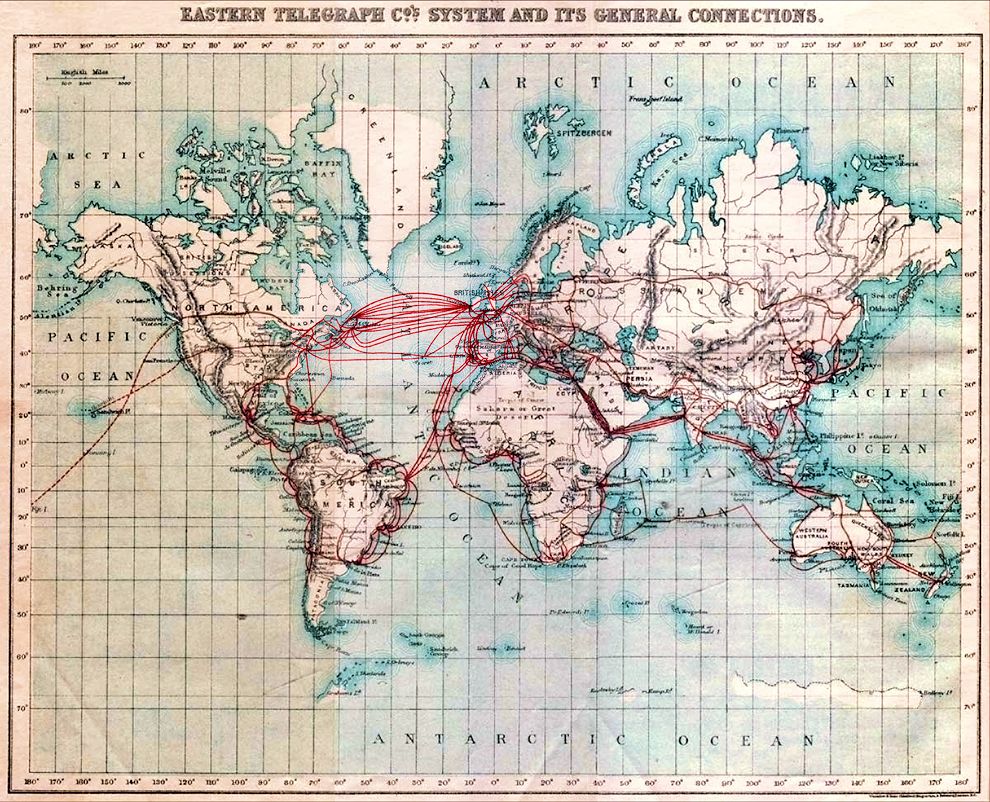
Abb.: Telegraphenleitungen 1901
[Bildquelle: Wikipedia. -- Public domain]
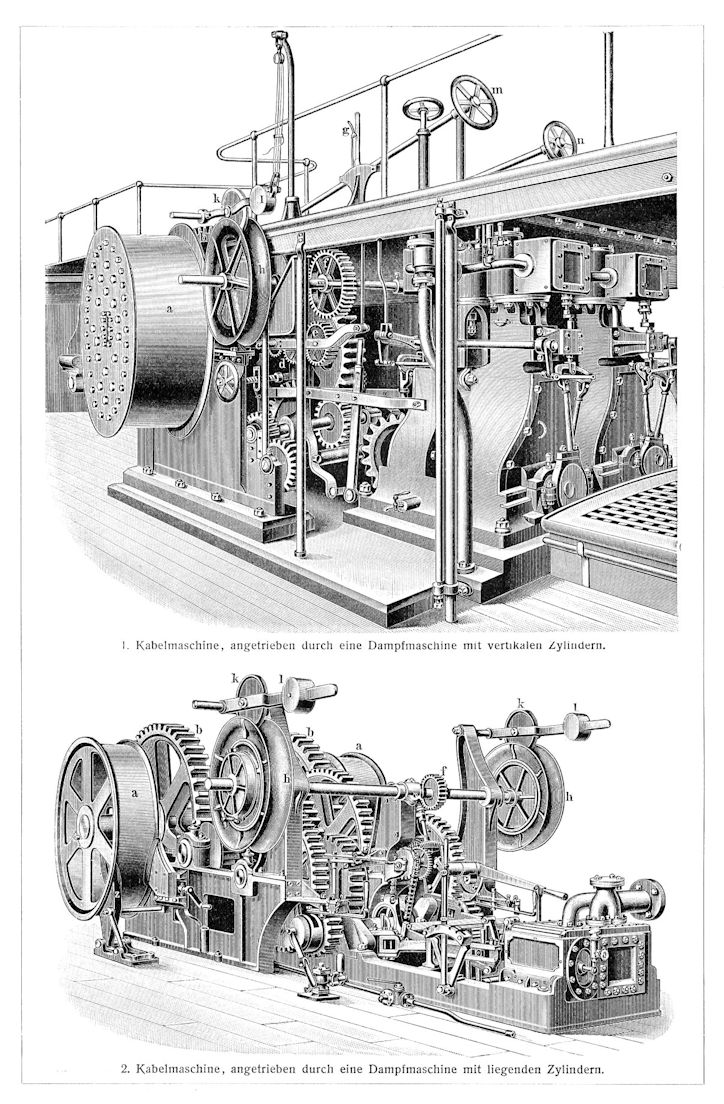
Abb.: Kabellegung
[Bildquelle: Meyers Großes Konversations-Lexikon 1905]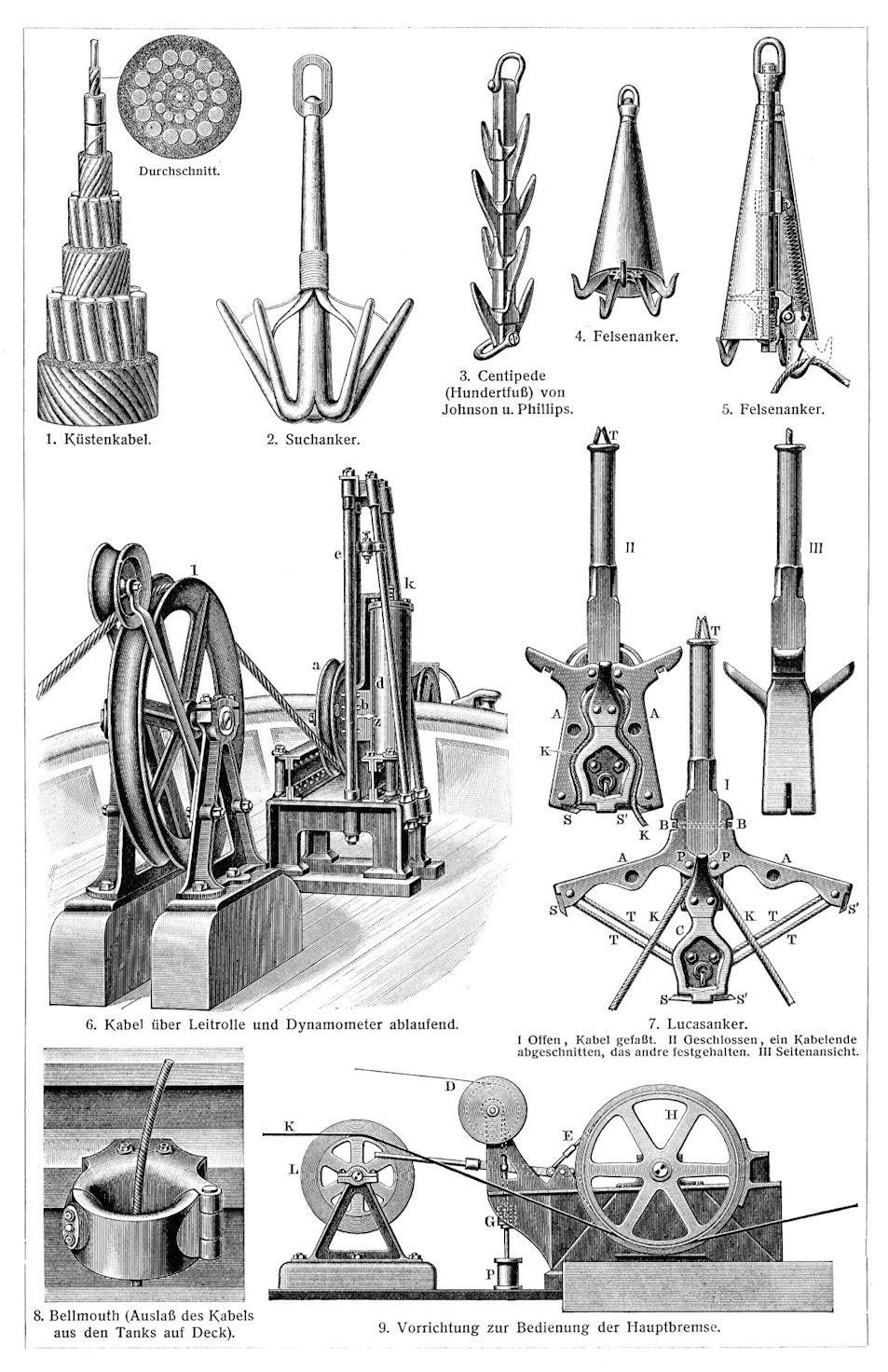
Abb.: Kabellegung
[Bildquelle: Meyers Großes Konversations-Lexikon 1905]
1901

Die Oldsmobile Company des US-Autobauers Ransom Eli Old (1864 - 1950) baut das weltweit erste Automodell in Serienfertigung: Oldsmobile Curved Dash. Von 1901 bis 1907 werden 19.000 Exemplare gebaut.
Abb.: Inserat 1901
1901

Auch in Deutschland werden Automaten immer verbreiteter.
Abb.: Witzpostkarte: Automat für kinderlose Eheleute
Abb.: Fahrscheinautomat BTS, Bangkok, 2009
[Bildquelle: Ian Fuller. -- http://www.flickr.com/photos/18684820@N00/3594083400. -- Zugriff am 2013-09-18. -- Creative Commons Lizenz (Namensnennung, keine kommerzielle Nutzung)]
1901
Edikt, dass jegliches landwirtschaftlich genutzte Land nach seiner Art im Grundbuch registriert werden muss.
1901
Bergbau-Gesetz
1901

König Chulalongkorn zum Erziehungsminister über Mädchenschulen:
"The government's revenue had better be used for boy's education. Do not promote girls' education too much." [Übersetzung: Barmé, Scot: Woman, man, Bangkok : love, sex, and popular culture in Thailand. -- Lanham : Rowman & Littlefield, 2002. -- 273 S. : Ill. ; 24 cm. -- ISBN 0-7425-0157-4. -- S. 22.]
1901


Kronprinz Vajiravudh (วชิราวุธ, 1881 - 1925) gründet in London Samaggi Samagom (“Samaggi”, สามัคคีสมาคม), The Thai Association in the UK. Er ist der erste Präsident. Der Kronprinz hilft auch bei der Herausgabe der Vereinszeitschrift Looker-on (ab 1922: สามัคคีสาร - Samaggi Sara, eine Zeitschrift, die trotz ihres Thai-Titels anfangs rein auf Englisch erscheint).
Abb.: ®Logo
"Samaggi Samagom (“Samaggi”), The Thai Association in the UK, was established in 1901 by [later] King Rama VI of Thailand. Set out to unite and reinforce harmonious relationships amongst Thai people in the United Kingdom by organising various events and activities. Samaggi Samagom has always had close working relationships with both The Royal Thai Embassy and The Thai Students’ Office in London as well as Anglo-Thai Society and the Young Buddhist Group. Samaggi’s aim is to be able to offer and impart information, and to provide any possible assistance to all Thai people around the UK especially Thai Students and their Societies. Today, although there are many Thai-related Societies emerging around the United Kingdom, the main and long running aim of Samaggi Samagom is still to provide a “get together” for all Thais living, studying and working in the UK. It organises a range of events from academic seminars and University Challenge to sporting competitions such as its annual Samaggi Games, as well as providing its members with entertainment gathering such as concerts. In its 106th year, Samaggi also aims to expand its organisation in order to fund its newly-formed partner "Open World" charity, the purpose of which is to support teaching and learning of children with less privileges in Thailand."
[Quelle: http://en.wikipedia.org/wiki/Samaggi_Samagom. -- Zugriff am 2012-10-09]
1901

Presbyterianische Missionare gründen die "The American School for Boys" (heute: Srithammarat Suksa School - โรงเรียนศรีธรรมราชศึกษา) in Nakhon Si Thammarat (นครศรีธรรมราช).
Abb.: Lage von Nakhon Si Thammarat (นครศรีธรรมราช)
[Bildquelle: OpenStreetMap. -- Creative Commons Lizenz (Namensnennung, share alike)]
1901

Es erscheint:
[Vajiravudh = วชิราวุธฯ] <1881 - 1925>: The war of the Polish succession / by H.R.H. The Crown prince of Siam. -- Oxford : Blackwell, 1901. -- 73 S. -- Über den Polnischen Thronfolgekrieg 1733 - 1738.
Abb.: Königreich Polen 1715
[Bildquelle: Dow, Earle Wilbur <1868 - >:
"It is hoped that the book may prove useful not only to members of the University who are reading for the History ‘ School,’ but also to all who are interested in the affairs of Europe in the eighteenth century." [a.a.O., S. vi.]
1901
Copyright-Gesetz: The Act on the Ownership of Authors B.E. 2444 (1901)
1901

Es erscheint:
Stumpf, Carl <1848 - 1936>: Tonsystem und Musik der Siamesen. -- Leipzig : Barth 1901. -- S. 71-138 : 11 Notenbeispiele. -- (Aus: Beiträge zur Akustik und Musikwissenschaft H. 3)
Abb.: Karl Stumpf, ca. 1900 / von Julius Schaarwächter (1847–1904)
[Bildquelle: Wikipedia. -- Public domain]
1901
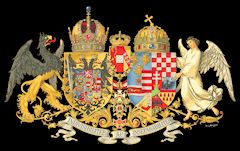
Es erscheint:
Samson, J. Camille <1856 - 1896>: Meine Reise nach Siam 1888 - 1889 : Aufzeichnungen des k. und k. Legationsrathes Dr. J. Camille Samson -- Wien : Als Manuskript gedruckt, 1901.
Abb.: Am Menam / von Ludwig Hans Fischer
[a.a.O., vor S. 1]
1901

Es erscheint:
Massieu, Isabelle Bauche: Comment j'ai parcouru l'Indo-Chine : Birmanie, États Shans, Siam, Tonkin, Laos. -- Paris : Plon, 1901. -- 404 S. :Ill
Abb.: Verladung eines Elefanten, Bangkok
[a.a.O., S. 37]
Abb.: Die Geier des Wat Saket
[a.a.O., S. 75]
1901

Es erscheint:
Arnaud, Émile <1864 - 1921>: Code de la Paix. -- In: L'Indépendance belge, 1901
Darin bildet er die Begriff "pacifisme" und "pacifistes". Pazifismus hat in Siam und Thailand wenig Chancen, da der staatstragende Buddhismus sich weigert, pazifistisch zu sein.
1901

Von den 120.000 US-Militärs im Aktivdienst sind 70.000 auf den Philippinen stationiert, um den Freiheitskampf niederzuschlagen.
1901 - 1904
Es erscheint als Fortsetzungsroman
แฮกการ์ด, เฮนรี่ ไรเดอร์ [Haggard, Henry Rider] <1856 - 1925>: สาวสองพันปี / übersetzt von ครูเหลียม [=นายสำราญ] [Khru Liam = Nai Samran] <1879 - 1963>. -- Originaltitel: She : A History of Adventure (1887) -- Erscheint in Buchform: 1916, 1944, 1991, 2004
Abb.: Einbandtitel der Ausgabe 1944
1901
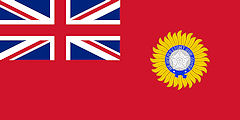
Es erscheint:
Kipling, Rudyard <1865 - 1936>: Kim. -- In: McClure's Magazine. -- 1900-12 - 1901-10 ; sowie in: Cassell's Magazine 1901-01 - 1911-11 ; in Buchform: London : Macmillan, 1900[-10]. -- Es ist ein Meisterwerk eines Romans aus imperialistischer Gesinnung.
Abb.: Titelblatt
Abb.: Rudyard Kipling / von Leslie Ward (1851–1922)
[Bildquelel: Vaity fair. -- 1894-06-07 / Wikimedia. -- Public domain]
1901/1902

Russland: Bildung der Partei der Sozialrevolutionäre (Партия социалистов-революционеров).
Abb.: קאםפף און קעםפפער
"Kampf un Kempfer" <jiddisch>, Pamphlet der Exilabteilung der Partei der Sozialrevolutionäre (Партия социалистов-революционеров) in London (Großbritannien)
[Bildquelle: Wikipedia. -- Public domain]
1901

Der deutsche Feuerwehrmann Richard Fiedler übergibt die ersten Modelle des von ihm erfundenen Flammenwerfers zur Erprobung an die deutsche Armee.
Abb.: "Da Nang, Vietnam - Sergeant Robert E. Fears clears an area using his flamethrower". -- 1970-05-22
[Bildquelle: Pearson, CPL, USMC / Wikimedia. -- Public domain]
1901

"Ping-Pong" (Tischtennis) wird in England als Handelsmarke eingetragen.
Abb.: Original Ping-Pong™ Ausrüstung
[Bildquelle: Daniel Schwen / Wikipedia. -- GNU FDLicense]
ab 1901
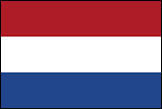
Der niederländische Arzt Willem Einthoven (1860 - 1927) entwickelt den Elektrokardiographen und die Auswertung der Elektrokardiogramme (EKG).
Abb.: Von Einthoven aufgenommene EKGs, 1903
[Bildquelle: Wellcome Images. -- Creative Commons Lizenz (Namensnennung, keine kommerzielle Nutzung)]
1901-01 - 1936

Rebellion der Bergvölker in Südlaos:
"In southern Laos the French administration of the highland tribes quickly provoked a massive rebellion which lasted for 35 years. The uprising was centered in the Bolovens Plateau [ພູພຽງບໍລະເວນ] and was led by the Alak tribe, who worked as weavers and merchants for the other Kha tribes [ข่า/ຂ່າ = Lao Theung - ລາວເທິງ] of the region. Although the revolt took the form of a messianic religious movement, the Alak and their allies (the most important of whom were the Loven [Laven], another Kha tribe) bitterly resented French attempts to collect taxes and regulate their commerce. They were, essentially, fighting for political independence. The revolt began in January 1901 when a group of Kha crossed the Mekong from Thailand into Saravane province [ສາລະວັນ], successfully avoided French troops trying to force them back into Thailand, and made contact with the Alak villages near Thateng on the northern edge of the Bolovens Plateau. Under the leadership of the Loven tribesman Ong Keo the revolt spread so quickly that by April French Commissioner Remy was forced to try to repress it by attacking its base area at Thateng with only the weak Saravane garrison. The French force was heavily assaulted by over 1, 500 armed Kha and escaped only after a bitter battle and heavy losses.
Ong Keo was soon joined by the great Alak leader Komadom, and the rebellion gained such momentum that in June Remy wired from Saravane for reinforcements saying, "It is a general uprising, all the villages on the Plateau are deserted, the rebels have formed seven groups, stronger than 1, 000 men each. "
In June the rebellion spread into Vietnam as Sedang rebels attacked the French garrison at Kontum. In April of 1902 it reached its peak when several thousand unarmed Laotians assaulted the provincial capital at Savannakhet and were gunned down by French troops, who killed over 150 Laotians. The movement lost much of its strength soon thereafter, for the French built a series of blockhouses around the edge of the Plateau, burned most of the region’s crops, moved villages out of the area, and drove the rebels off the Plateau and eastward into the mountains.
In 1907 the French launched a major campaign to destroy the rebel stronghold and succeeded in forcing Ong Keo to surrender and swear his loyalty to France. But they failed to capture Komadom and his Alak followers, who escaped to the Phou Luong ridge [Phú Lương] on the northeast edge of the Bolovens Plateau. Ong Keo’s submission was only temporary; he fled to Thailand, where he gained new support, and then returned to Laos. In 1910 through the leader of the royal house and governor of Champassak [ຈໍາປາສັກ], Chao Nhouy [หยุย ณ จำปาศักดิ์, 1874 - 1945], the French arranged for negotiations between Ong Keo and a French representative, Fendler. Knowing that the Kha would not touch his head when they checked for weapons, Fendler hid a pistol in his helmet, and when the bodyguards had backed away he shot Ong Keo.
Komadom carried on a small resistance movement at Phou Luong until 1934 when he suddenly began to gain masses of new followers. The depression had affected the hill tribes severely because the relative value of the coffee and spices they sold declined sharply in relation to the cloth and iron they purchased. Poverty and hunger swept the Plateau, and in their wake Komadom’s movement gained new strength. In 1935 whole districts began abandoning their villages to join Komadom. The French responded in the spring of 1936 with a massive pacification campaign which climaxed in an attack on Phou Luong and the capture of Komadom’s son, Si Thon. Four months later the movement ended when Komadom was shot by French militia as he was fleeing into Attopeu province [ອັດຕະປື ]. However, the outcome of this rebellion still influences Laotian politics, for Komadom’s son is now vice-chairman of the Pathet Lao for the southern hill peoples, and the son of the Champassak governor, Chao Nhouy, is a present-day right-wing leader, Prince Boun Oum [ເຈົ້າບຸນອຸ້ມ ນະ ຈຳປາສັກ
, 1911 - 1980]."[Quelle: McCoy, Alfred W. <1945 - >. -- In: Laos : war and revolution / ed. by Nina S. Adams and Alfred W. McCoy. -- New York : Harper & Row, 1970. -- 482 S. ; 21 cm. -- SBN 06-090221-3. -- S. 87ff. -- Fair use]
Abb.: Lebensgebiete der Alak, Loven und Sedang, 1971
[Bildquelle: CIA. -- Public domain]
1901-01

Königliches Edikt über die Ordensvergabe
"Decorations. Pay and pensions were supplemented by a variety of motivational devices, one of which was the conferring of decorations in recognition of distinguished contributions to the king’s service. In aim—if not always in practice—decorations were rewards for effective administration. Decorations, like the titles mentioned previously, had to be rationalized as the administrative system developed. In January, 1901, King Chulalongkorn issued a royal decree specifying the decorations which various classes of officials might receive, and setting forth the basis for granting them.
"Decorations are conferred on the basis of special merit..., not on the basis of rank. Decorations are thus different from titles. They are based upon merit irrespective of title. "
Royal decorations, in other words, amounted to an Oriental incentive award arrangement.
High-class decorations were not to be conferred upon low-ranking officials, and the royal decree specified the appropriate relationships between ranks and decorations in full detail, as a directive for the Department of Decorations and the Department of the Royal Secretary of the Palace Ministry in the administration of the awards program."
[Quelle: Siffin, William J. <1922 - 1993>: The Thai bureaucracy: institutional change and development. -- Honolulu : East-West Center, 1966. -- 291 S. ; 24 cm. -- S. 120. -- Fair use]
1901-01 - 1901-02

In den ersten zwei Monaten des Jahres werden für Kremationen von Mitgliedern des Königshauses 1 Mio. Baht ausgegeben, etwas mehr als das Budget des Landwirtschaftsministeriums für das ganze Jahr.
1901-01

Es erscheint:
Lavallée, Alfred: Notes éthnographiques sur diverses tribus du Sud-Est de l'Indo-Chine. -- In: Bulletin de l'Ecole française d'Extrême-Orient Volume 1, Numéro 1 (1901-01). -- S. 291-311
Abb.: Forschungsroute des Autors
[a.a.O., nach S. 310]Der Kolonialbeamte zieht folgende Schlussfolgerung:
"Il ne semble pas, pour conclure, que la race sauvage, indolente, superstitieuse, non progressive, soit jamais appelée à jouer un rôle important en Indo-Chine. Il semble même qu'elle restera toujours une force inutilisable pour l'action civilisatrice, à laquelle elle ne créera que des obstacles. Sa piètre vitalité ne lui permettra pas, d’ailleurs, de maintenir son rang au niveau des races plus actives de l’Annam et du Laos, (qui l’enserrent et la pénètrent un peu plus chaque jour. Les Annamites surtout, beaucoup plus entreprenants et plus pressés par le besoin (que les Laotiens, s’infiltrent de plus en plus dans la région sauvage. Ce serait certes un bien pour la colonisation que cet exode s’accentuàt sous notre impulsion et que la race sauvage se fondît avec les peuples voisins dans une race mélisse qui, résistant mieux que les Annamites et les Laotiens au climat des montagnes, pourrait mettre enfin en valeur toutes les ressources qu’offre ce pays." [a.a.O., S. 311]
1901-01-17 - 1901-02-09
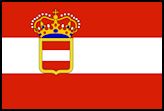
In Paknam (ปากน้ำ) ankert der Kleine Kreuzer der österreichischen Kriegsmarine S.M.S. Zenta. Er kommt von Hong Kong und fährt zurück nach Hongkong. Reisezweck: Stationsschiff während des Boxeraufstands in China. Reise nach Siam zwecks Überreichung des Beglaubigungsschreiben des Gesandten.
Abb.: S.M.S. Zenta
1901-01-22


Tod von Victoria, Königin des Vereinigten Königsreichs, Kaiserin von Indien.
Abb.: British Indian Empire 1907
[Bildquelle: Joppen, Charles <1878 - >: Historical atlas of India for the use of high schools, colleges, and private students. -- London : Longmans, 1907]
Abb.: Kaiserin Victoria und ihr Munshi (مُنشی), Abdul Karim (حافظ محمد عبد الكريم)
1894/95
[Bildquelle: Wikipedia. -- Public domain]
1901-01-22 - 1910-05-06

Eduard VII. ist König des Vereinigten Königsreichs und Kaiser von Indien.
Abb.: Eduard VII., 1901-03-13
[Bildquelle: Wikipedia. -- Public domain]
1901-02

Es erscheint:
Bernard, Fernand <1866 - 1961>: L'Indochine, erreurs et dangers. -- In: La revue de Paris (1901-02). -- S. 534 - 565 ; 727 - 760
In Buchform:
Bernard, Fernand <1866 - 1961>: L'Indochine, erreurs et dangers : un programme. -- Paris : Fasquelle, 1901. -- 305 S.
Der Autor kritisiert die französische Kolonialideologie und versetzt dem Generalgouverneur Paul Doumer (1857 - 1932) einen schweren Schlag.
1901-02-16
Erste Hinrichtung im neuen Gefängnis.
1901-03

Phra Sukhunkhanaphon, geistlicher Erziehungsdirektor, berichtet aus Chantaburi (จันทบุรี):
Abb.: Lage von Chantaburi (จันทบุรี)
[Bildquelle: OpenStreetMap. -- Creative Commons Lizenz (Namensnennung, share alike)]
"Apart from government officials and some Chinese, there is little faith in modern education. People think that there is no utility to be served in educating their children." [Übersetzung: Wyatt, David K. <1937 - 2006>: The politics of reform in Thailand : education in the reign of King Chulalongkorn. -- New Haven : Yale UP, 1969. -- 425 S. : Ill. ; 23 cm. -- (Yale Southeast Asia studies ; 4). -- SBN 300-01156-3. -- S. 251]
1901-03
Bangkok Times:
"It seems doubtful if even that useful personage, the oldest inhabitant, can remember so lengthy an extension of cool weather as we are having at present. Instead of a few mango showers in January and February, and otherwise unbroken drought and heat till into May, we have right along had the weather that one expects after the breaking of the monsoon. There certainly has not been anything like it for the past 15 years. Is the climate changing and the terrors of the hot season becoming a thing of the past? Or shall we have to pay for the present pleasant weather by a long delay in the coming of the monsoon?"
1901-03
Bangkok Times:
"We hear that the Britisher in Bangkok may once more die in peace undisturbed by the fear that on account of his nationality there will be no burial for him. The Consul and the undertaker are reported to have, well, ‘buried the hatchet’ seems the appropriate phrase. Moreover, a fixed tariff of fees has been agreed upon and you may now have a first, second, or third-class funeral."
Abb.: Protestantischer Friedhof, Bangkok, 2009
[Bildquelle: kwanz. -- http://www.flickr.com/photos/kwanzshop/3313620680/. -- Zugriff am 2012-05-12. -- Creative Commons Lizenz (Namensnennung)]
1901-03-10

Der französische Geschäftsträger in Bangkok, de Panafieu, an den französischen Außenminister Théophile Pierre Delcassé (1852 - 1923):
"„Deux politiques peuvent être suivies à l’égard du Siam. L’une, la politique de conflit, mais qui doit être suivie d’une action ... L’autre ... est la politique de paix ...Nous avons tout à perdre en maintenant le statu quo, c’est-à-dire en suivant franchement ni l’une ni l’autre de ces deux politiques."
Panafieu
war der Ansicht, dass die politische Lage in Ostasien Frankreich keine Wahl lasse, als sich für die „politique de paix" zu entscheiden. Die Gründe für die Unhaltbarkeit des status quo hingegen ergaben sich seiner Ansicht nach aus der Modernisierung Siams, die die bisherige französische Politik wirkungslos mache und sich bei Fortdauer der französisch-siamesischen Spannungen weiter zu Lasten des französischen Einflusses auswirken müsse. Panafieu ging insbesondere davon aus, dass die Schutzherrschaft über die in Siam lebenden französischen Kolonialuntertanen (protection) angesichts der„politique habile et patiente du Gouvernement Royal, contre laquelle nous luttons sans chances de succès"
als Stütze des französischen Einflusses ungeeignet war."
[Quelle: Petersson, Niels P.: Imperialismus und Modernisierung : Siam, China und die europäischen Mächte 1895 - 1914. -- München : Oldenbourg, 2000. -- 492 S. ; 25 cm. -- (Studien zur internationalen Geschichte ; Bd. 11). -- ISBN 3-486-56506-0. -- Zugl.: Hagen, Fernuniv., Diss., 1999. -- S. 283]
1901-04-01
Inkraftsetzung der Verordnung für Pfandhäuser.
1901-04-01

Abb.: The march of the strenuous civilization / von C. S. Taylor
[Bildquelle: Life. -- 1901-04-01]
1901-04-06
Bangkok Times: im Zentralgefängnis Bangkoks sind 1500 Häftlinge, davon ca. 60 Frauen.
1901-04-19

Der deutsche Glastechniker Reinhold Burger (1866 - 1954) meldet die In Zusammenarbeit mit Wilhelm Conrad Röntgen (1845–1923) Röntgenröhre als Deutsches Reichpatent an. Veröffentlicht wird das Patent 1902-04-22.
Abb.: Aus der Patentschrift
1901-05
Da Ausländer mit ihrem Personal nicht zurechtkommen, bildet die Regierung ein Registrierungsbüro für Bedienstete. Dort sollen Bedienstete mit Fingerabdruck registriert werden, die Arbeitgeber sollen Zeitpunkt und Grund für Entlassungen melden. In den ersten zwei Monaten meldeten aber nur 67 Arbeitgeber ihre Bediensteten, obwohl 206 Arbeitgeber zugesagt hatten. Der Hauptgrund ist, dass die Hainan-Chinesen, die die Mehrheit der Bediensteten stellen, sich der Registrierung widersetzen. Um die restlichen - malaiischen, siamesischen und indischen - Bediensteten kümmert man sich nicht sehr.
1901-05
Bangkok Times:
"Timber for ordinary buildings is dear at present, a fact which renders the public rather more attentive to the voice of the professional forester than it generally is. The figures and areas dealt with by experts in this art are generally so large that they are looked on as rather outside the range of practical business. But the shrinkage of the world is bringing all its ‘timber properties’ into reach. Their sites, boundaries and contents are all well known with one notable exception: that of the great tropical forest which belts the globe. All nations and languages — the civilised ones, that is to say, for the savage, like the peasant, is always the enemy of trees — are beginning to take stock both of the waste and extravagance of the past and of the principal left for the future."
1901-05
Bangkok Times:
"Twice recently the Paknam railway bridge at the top of the Surawongse Road [ถนนสุรวงศ์] has been on fire and on both occasions the fire has been extinguished by the same gentleman. The last occasion was on Sunday evening when the flames were rising to a height of about three feet. The bridge is wooden and the fire is no doubt caused by red hot cinders dropping from the engine on to the planks."
1901-05
Bangkok Times:
"SIAM IN THE HOME PRESS. The Black and White Budget of the 13th ultimate contains a picture showing "the King of Siam taking his usual morning constitutional." His Majesty, in an overcoat, knee breeches and putties, is riding a camel and the other chief figure in the picture is an Arab in his white robes. That does not strike as being quite the familiar sight here that the Black and White Budget seems to suppose. Presumably it is from a photograph taken in Egypt, but was supposed in London to show the King of Siam at home.
Then, here is another amazing thing from a home paper, the Globe. Perhaps Sunandalaya College is meant to be referred to, but it is not easy to guess what is meant by such nonsense. "A somewhat curious school has been opened at Bangkok by an English lady. The pupils are fifteen in number, and they are all princesses of the Royal family of Siam. They are taught to do everything that a good housekeeper should do. They cook, wash clothes, bake, sweep the rooms, lay the table, arrange the flowers, and, in short, learn to make themselves generally useful. They leave the school to be married at the age of fifteen and it is said that a Siamese Princess now makes an admirable wife.""
1901-05-06

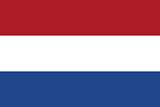
Abreise Ramas V. nach Java (niederländisch). Der König reist mit der königlichen Yacht Maha Chakri (มหาจักรี). Kosten aus der Staatskasse Siams: 1 Mio. Baht.
Abb.: Lage von Java
[Bildquelle: OpenStreetMap. -- Creative Commons Lizenz (Namensnennung, share alike)]
1901-05-16

Stapellauf der TS King Edward, des ersten Handelsschiffs mit Dampfturbinenantrieb. Sie wird im Küstendienst Schottlands eingesetzt.
Abb.: TS King Edward, 1901
[Bildquelle: Wikipedia. -- Public domain]
1901-06
Bangkok Times:
"In the small hours of Wednesday morning a raid was made on die-house of Nai Kura, at Khlong Bang [คลองบาง], at the end of Khlong Bangkok Noi [คลองบางกอกน้อย]. Nai Kum and the inmates fled and the robbers, who found 524 ticals [Baht] went on their way rejoicing. But Nemesis was on their track — and so was Nai Kum. Enlisting the assistance of the police, he came upon three of the thieves asleep in a house on Khlong Mahasawat [คลองมหาสวัสดิ์]. On their faces was still the chalk affected by the Siamese robber when he goes a-robbing, and on one of the trio was found 120 ticals in silver. The three are now thinking the matter out at Borisah Court No. 3 and Nai Kum is waxing important in the eyes of his neighbours."
Abb.: Mündung von Khlong Bangkok Noi [คลองบางกอกน้อย]
[Bildquelle: OpenStreetMap. -- Creative Commons Lizenz (Namensnennung, share alike)]
Abb.: Lage von Khlong Mahasawat [คลองมหาสวัสดิ์]
[Bildquelle: OpenStreetMap. -- Creative Commons Lizenz (Namensnennung, share alike)]
1901-06
Bangkok Times:
"A contributor who knows a good deal about the railway possibilities of Siam, pointed out yesterday some of the weak points in the railway policy of the country and emphasised the importance of encouraging light railways as feeders of the main line. With most of what he wrote, we are in entire agreement but we think he is wrong in discouraging the construction of the Chiang Mai line [เชียงใหม่ / ᨩ᩠ᨿᨦᩉ᩠ᨾᩲ᩵]. It will not pay, he argues. Probably that is so; it will not pay for some time but we still believe there is good reason for pushing on the line as speedily as possible.With, say, a light railway from Chiang Mai the line would tap the great plain of Chiang Saen [เชียงแสน] and open up a far wider market for the various produce of that important district. Further, the railway would give Bangkok a better chance of competing for the custom of the caravans that come down from Yunnan [雲南]."
Abb.: Lage von Chiang Mai [เชียงใหม่ / ᨩ᩠ᨿᨦᩉ᩠ᨾᩲ᩵], Chiang Saen [เชียงแสน] und Yunnan [雲南]
[Bildquelle: OpenStreetMap. -- Creative Commons Lizenz (Namensnennung, share alike)]
1901-06
Bangkok Times:
"Kadersah, the famous hat snatcher was again before the British Court today on the usual charge. Mr. Black sent him to gaol for three months, remarking that on the next occasion he was convicted he would be sent to Singapore for two years."
1901-07
Bangkok Times:
"Sunday morning golf is quite an institution now in Bangkok. Play begins about 7 a.m. and goes on till noon or later. Members take turns to provide refreshments, much needed and well earned and there is a goodly number of 'dead I men' piled up at the end of the morning. The Clubhouse is a Sala [ศาลา] in front of the Museum. On average about twenty turn up and although a rival attraction is threatened — we refer, of course, to the hunting of the snipe bird — the golfing fraternity has considerable faith in the devotion of its followers."
Abb.: Lage des Clubhauses des Golf-Clubs
[Bildquelle: OpenStreetMap. -- Creative Commons Lizenz (Namensnennung, share alike)]
1901-07
Der französische Außenminister Théophile Pierre Delcassé (1852 - 1923) erhält vom Kabinett die Zustimmung, Paul Doumer (1857 - 1932), den Generalgouverneur von Französisch-Indochina, zu Anfang 1902 zu entlassen, da dieser im Umgang mit Siam eigenmächtig war und in den Verhandlungen versagt hat. Nachfolger Doumers, wird Delcassé's früherer chef de cabinet, Paul Beau (1857 - 1926), der keine Annexionsgelüste gegenüber Siam hat.
Abb.: Paul Doumer
[Bildquelle: Le petit journal : supplément illustré. -- 1905-01. -- Public domain]
1901-07-04

John Barrett, ehemaliger US-Generalkonsul in Bangkok, in der New York Times:
| "Nobody dines alone. You
either invite or are invited. Invitations go out a long time ahead and
there is no let up even in the hottest months, for the omnipresent
punkahs and electric fans keep the diners cool. The regular dinner hour is at 8 o'clock and it is the chief meal of the day. Fully two hours are spent at the table before the ladies go out on the veranda to gossip and leave the men for cigars and discussions on international politics, polo, golf, yachting and the next royal function. Later they come together for whist or the "American" game, and finally break up about midnight. Around the table ... half a dozen languages are heard ... A tropical dinner, with the punkah [Decken-Schwingfächer] swinging silently overhead, the men in white, the women in appropriate gowns, the table decorated with lotus flowers or heaped with white roses, the clean, lithe-limbed, whit e dressed, noiseless Chinese boys gliding about, the music of many languages, and the varied national types lending unique variety to the occasion, together with the mellowness and languor of the tropical air and the intermittent swish of oars in the waters of the neighbouring river, and the homely but cheerful call of the “tokay" [lizard] in the banyan tree is always remembered as quite delightful, even if your "no. l" boy comes and tells you at the end of the third course, that the "No. l" cook has been suddenly seized with an attack of cholera! The foreigners are too few to warrant a New York or London supply of delicacies, but we have served on our tables ice cream made in San Francisco and game purchased in the markets of London." [Abgedruckt in: Burslem, Chris: Tales of old Bangkok. -- Hong Kong : Earnshaw, 2012. -- ISBN 13-978-988-19984-2-2. -- S. 82] |
| "Servants are not a problem
in Asia - they are a pleasure. In Bangkok, the house servants of
foreigners are usually Chinese. The average household has a "No 1" or
head boy who acts as butler, valet, headwaiter and general supervisor or
majordomo. He is assisted by the "No.2" boy who does any of the heavier
work that does not become the "No.1". These two are assisted by the "No
3" boy who might however also be called the "No.1" coolie. This coolie
may either be a man, who has long done coolie labour, or a "learn
pidgin" boy, i.e. one who while acting as coolie, aspires some day to
become a full fledged "boy". This term "boy" is applied to household
servants generally in the Orient and has no reference to age, size or
experience. Many a "boy" has passed the age of 60 and still remained a
faithful servant. Occasionally, if a master wishes to show special
favour he does not call his servant "boy" but salutes him as "Chin",
"Teng", "Lek", or whatever may be his name. In the kitchen we again find the numeral arrangement of cooks - two of them, and one coolie for the heavy work. Then comes the stable. Here there is a change of nationality. The man who looks after the horses is a Malay - sometimes a Siamese - who has one or more numbered assistants, according to the number of horses. Next we note the laundry. Here we have either a Chinaman or a native Siamese woman. If you are a bachelor, you have the former, for fear the neighbours may talk. The washman is called the "dobe." Finally we have the men who look after the grounds or "compound". In Bangkok they are commonly referred to as boatmen because, aside from cleaning the lawn and filling the bathroom tank, they "chow" or propel the boat which everyone possesses in order to go about on the wide river and numerous canals. Three of these at least are required. They are always Siamese and rank also by numbers. I must not leave out the watchman - the noble Indian - the "Sikh" who is supposed to guard the premises by night and never sleep, but is always found sleeping!" [Abgedruckt in: Burslem, Chris: Tales of old Bangkok. -- Hong Kong : Earnshaw, 2012. -- ISBN 13-978-988-19984-2-2. -- S. 113] |
1901-07-30


Rama V. an Prince Paripatra Sukhumbhand, the Prince of Nakhon Sawan ( สมเด็จพระเจ้าบรมวงศ์เธอ เจ้าฟ้าบริพัตรสุขุมพันธุ์ กรมพระนครสวรรค์วรพินิต, 1881 - 1944), der in Deutschland studiert:
"The Cabinet Ministers these days are like threshing-mill buffalo: if you stop goading and shouting at them, the millstones grind to a halt. I would change them, but 1 haven’t the men." [Übersetzung: Wyatt, David K. <1937 - 2006>: The politics of reform in Thailand : education in the reign of King Chulalongkorn. -- New Haven : Yale UP, 1969. -- 425 S. : Ill. ; 23 cm. -- (Yale Southeast Asia studies ; 4). -- SBN 300-01156-3. -- S. 293]
1901-08
Bangkok Times:
After reading the instructions issued to Paris policemen for treatment of persons struck by falling electric wires, a good many people will object to being resuscitated and will prefer death. The process is to lay you on your back, and pull your tongue vigorously in and out of your mouth at a rate of twenty times a minute for an hour. This is the penalty we pay for the telegraph, the telephone and the electric tram. Let us go back to the dear old days of the two-penny paper and the stage coach. It was a much happier world then, and nobody seized your tongue and pulled it out twenty times a minute in the name of humanity."
1901-08
Bangkok Times:
"About four o’clock on Monday morning, a Siamese was arrested in the street by the Bangkok police on the grounds that he was carrying a bundle with a loaded revolver, a couple of daggers, two braces and bits for boring and a number of charms such as burglars invariably take with them when going to commit a robbery. The only explanation he could give of his being in possession of such articles was that he had just bought them in a pawnshop and he was walking home. The policeman thought that story a bit thin and took him to the station. The prisoner, however, is a Mom Chao [หม่อมเจ้า], the son of the Prince [เจ้าฟ้า oder พระองค์เจ้า] and, according to the regulation defining the privileges of princes it seems that a Mom Chao cannot be put under arrest by the police or put on trial without special permission. That permission, we understand has been applied for and though we have not heard, we presume it has by this time been obtained. The charge is a criminal one and the authorities can only support the police. Peers and princes have these privileges everywhere but these cannot save them from trial on criminal charges. This particular Mom Chao has already served a sentence of ten years in gaol."
1901-08
Bangkok Times:
"This S.S. Donai is become famous, if not for the quantity of her cargo at least for the ‘striking’ manner in which she makes her presence felt this side of Bang Kho Laem Point [บางคอแหลม]. She is the terror of ship and cargo boat owners, as also of those whose property abuts the Menam [แม่น้ำเจ้าพระยา]. Her latest escapade occurred last evening. The speed at which she came up the river near the G.B.T.C.’s premises was a sight. Then she dropped anchor nearly opposite the Harbour Office. There was a strong flood tide and instead of bringing up gracefully she tried conclusions with the Harbour Department’s wharf. The S.S. Bukettingi which was lying there had her after port bulwark stove in and one of her masts sprung. A Public Works Department launch was sunk and three of the Harbour Master’s launches were damaged. Also, the wharf itself was broken down. The damage has been roughly estimated at about Tcs. [Baht] 12,000. The Donai is today anchored peacefully in front of the Hongkong Bank."
Abb.: Lage von Bang Kho Laem [บางคอแหลม]
"ss DONAI built by Robert Napier Govan,
Last Name: KAKO GO (1943)
Yard No 446
Previous Names: 1930: FUKUJU MARU 1933: HWEI PING
Propulsion: steam, single screw
Launched: Thursday, 19/09/1895
Built: 1895
Ship Type: Passenger Cargo Ship
Tonnage: 792 grt
Length: 211.9 feet (BP)
Breadth: 27.9 feet
Owner History:
Messageries Fluviales de Cochinchine, Saigon
Status: Torpedoed & Sunk - 14/04/1945
Remarks: Completed October 1895
Torpedoed by USS GABILAN in 05.19S 117.06E off Kangean Island
alternative sources say bombed by US aircraft on same day
Previous update by Bruce Biddulph
Last updated: by George Robinson from the original records by Stuart Cameron"[Quelle: http://www.clydesite.co.uk/clydebuilt/viewship.asp?id=8731. -- Zugriff am 2012-05-13]
1901-08
Bangkok Times:
"AN EDITORIAL The proposal to make a ship canal across the Isthmus of Kra [คอคอดกระ
], has been brought forward on several occasions. Surveys have been undertaken, companies have been formed to take up the preliminary studies. Then silence has fallen on the proposal and the Isthmus of Kra, still inviolate, has sunk into forgetfulness. Perhaps the failure of the Panama Canal has loomed in the minds of the capitalists at the crucial psychological moment when a call had to be made for funds. Perhaps powerful foreign influences have been interposed. To cut the Isthmus of Kra is to destroy the prosperous port of Singapore."
Abb.: Vorschläge für einen Kra-Kanal (โครงการคลองไทย)
[Bildquelle: CIA / Maximilian Dörrbecker (Chumwa) / Wikipedia. -- Public domain]
1901-08-18


Rama V. an Unterrichtsminister Phraya Phatsakorawong (Phon Bunnag) [พระยาภาสกรวงศ์ (พร บุนนาค), 1849–1920]:
"I think that [Campbell’s] [John Gordon Drummond Campbell (1864 – 1935), Educational Adviser for the Education Department of the Siamese Government] ideas afford no basis for the strengthening of education in Thailand other than having all Thai speak English. Out of thirty million baht in the treasury, he would have us devote half of founding schools, of which 80% would be expended on hiring farang [ฝรั่ง] teachers, 10% on Thai teachers, and 10% on constructing schools. Children wouldn’t have to learn Thai at all. He mentions nothing of which I am not aware already or which has not already been thought of but which the Ministry has not succeeded in carrying out." [Übersetzung: Wyatt, David K. <1937 - 2006>: The politics of reform in Thailand : education in the reign of King Chulalongkorn. -- New Haven : Yale UP, 1969. -- 425 S. : Ill. ; 23 cm. -- (Yale Southeast Asia studies ; 4). -- SBN 300-01156-3. -- S. 275]
1901-08-22
Englischsprachiger Unterricht in zwei 1901-06 gegründeten privaten Mädchenschulen kostet 1 Baht pro Monat.
1901-09
Bangkok Times:
"In an announcement in the name of the King contained in the latest issue of the Royal Gazette, it is stated that all religions are, from old, equally tolerated and respected in the Kingdom of Siam. The occasion of the announcement is the rebuilding of the Mohammedan temple [Masjid Ansar Al-Sunnah] on Khlong Bangkok Noi [คลองบางกอกน้อย]. The site of the temple is required for the new Petchburi railway and the arrangement come to was to remove the temple to a new site across the creek. It is understood that His Majesty is having the temple rebuilt at his personal expense."
Abb.: Lage von Khlong Bangkok Noi (คลองบางกอกน้อย)
[Bildquelle: OpenStreetMap. -- Creative Commons Lizenz (Namensnennung, share alike)]
1901-09
Bangkok Times:
"A new law published in the latest Gazette brings Siam into line with Western nations in the matter of copyright. The preamble points out that, hitherto, authors have had no protection for their work in this country. Anyone had the right to republish and sell any book. The new enactment follows the lines of the English law, giving protection for 42 years, or the period of the author’s life with a grace of seven years, whichever is the longer. As trade bulks so very much larger than letters in modern Siam, it is to be trusted that the Government will without delay follow up this law with another giving protection to trademarks."
1901-09-06
Der König erlaubt die Gründung des Royal Bangkok Sports Club (RBSC)
Abb.: Royal Bangkok Sports Club
[Bildquelle: Twentieth century impressions of Siam : its history, people, commerce, industries, and resources / ed. in chief: Arnold Wright. -- London [etc.] : Lloyds, 1908. -- S. 235]
"Somdej Phra Paramintara Maha Chulalongkorn Phra Chula Chom Klao, the King of Siam, wishes to make known to all those who see this charter that Monsieur Oloroffsky and many others among the Thai and foreign residents in the Capital City of Bangkok have submitted a request for Royal approval for the establishment of a Club in Bangkok for the purpose of improving the standard of horse breeding and various other field sports. His Majesty’s Royal opinion being that such a Club would also help towards promoting the prosperity and enhancing the beauty of Bangkok, Royal approval is hereby graciously given subject to the following conditions: [...]" [Quelle: http://www.rbsc.org/history.aspx. -- Zugriff am 2011-10-18]
1901-09-07

The Times <London>:
"Probably the most hopeless and inefficient department is the Education Department [...] The whole department very badly wants overhauling." [Zitiert in: Wyatt, David K. <1937 - 2006>: The politics of reform in Thailand : education in the reign of King Chulalongkorn. -- New Haven : Yale UP, 1969. -- 425 S. : Ill. ; 23 cm. -- (Yale Southeast Asia studies ; 4). -- SBN 300-01156-3. -- S. ]
1901-09-07

Als Friedensschluss zum Boxeraufstand (義和團運動) muss China in Peking das "Boxerprotokoll" (辛丑条约) unterzeichnen. Vertragspartner sind: Österreich-Ungarn, Frankreich, Deutschland, Italien, Japan, Russland, Großbritannien, USA, Belgien, Spanien und die Niederlande.
Abb.: Unterzeichnung des Boxerprotokolls (辛丑条约) 1901-09-07
[Bildquelle: Wikipedia. -- Public domain]
Abb.: Chinesisches Reich 1899
[Bildquelle: The Century atlas of the World. -- New York, 1901]
"Seit dem 26. Oktober 1900 verhandelte der erfahrene Diplomat Li Hongzhang ( 李鴻章) als Abgesandter des Kaiserhofs über die Friedensbedingungen. Die nach Gansu (甘肅) geflohene Kaiserwitwe akzeptierte am 10. Januar 1901 die Bedingungen der Kolonialmächte. Am 7. September 1901 wurde das so genannte „Boxerprotokoll“ unterzeichnet. Es stellte fest, dass
- die chinesische Regierung sich für die Morde an ausländischen Diplomaten (neben Ketteler auch der japanische Gesandtschaftssekretär Graf Akira Sugiyama (杉山 彬; 1862–1900) entschuldigen und ein Denkmal für Ketteler errichten müsse,
- Aufständische zu bestrafen seien (viele Todesurteile wurden verhängt),
- die Beamtenprüfungen in allen Städten, in denen Ausländer getötet worden waren, für fünf Jahre ausgesetzt werden sollten,
- China Reparationen in Höhe von 1,4 Milliarden Goldmark bis 1940 (70 Millionen Pfund Sterling) und
- Entschädigungen an betroffene Ausländer zu zahlen hatte (Boxerentschädigung),
- keine Waffen gekauft und eingeführt werden durften,
- das Gesandtschaftsviertel in Peking ausschließlich für Ausländer reserviert und befestigt werden sollte,
- die Dagu-Forts (大沽炮台) geschleift und ausländische Stützpunkte an der Bahnstrecke zwischen Peking und der Küste errichtet werden sollten,
- ein modernes Außenministerium mit Vorrang vor allen anderen Ministerien eingerichtet werden musste,
- ein kaiserliches Edikt bestätigt wurde, das ausländerfeindliche Organisationen bei Todesstrafe verbot,
- der Kotau (tiefe Verbeugung, Ehrenbezeigung) für ausländische Diplomaten abgeschafft wurde (tiefe Demütigung, zusammen mit einer Militärparade in der Verbotenen Stadt, die nur für chinesische Beamte geöffnet war)
Ein weiterer als besondere Demütigung empfundener Punkt war, dass der mit der Sühnemission beauftragte Zaifeng, 2. Prinz Chun (醇親王), Vater des letzten chinesischen Kaisers Puyi, sich persönlich in Berlin unter entwürdigenden Bedingungen für den Gesandtenmord an Ketteler entschuldigen sollte. Die chinesische Delegation errang jedoch einen kleinen diplomatischen Sieg und konnte erreichen, dass der Prinz nicht vor Kaiser Wilhelm II. niederknien musste. Daraufhin konnte der Sühneakt schließlich am 4. September 1901 im Grottensaal, Neues Palais in Potsdam, Park Sanssouci, stattfinden."
[Quelle: http://de.wikipedia.org/wiki/Boxeraufstand#Der_Boxeraufstand_nach_der_Einnahme_Pekings. -- Zugriff am 2011-11-28]
1901-09-14 - 1909-03-04

Theodore Roosevelt (1858 - 1919) ist Präsident der USA.
Abb.: Theodore Roosevelt 1898
[Bildquelle: Wikipedia. -- Public domain]
Abb.: Theodore Roosevelt / von Raphael Kirchner <1876 - 1917>. -- In: L'Assiette au beurre <Paris, Frankreich>. -- 1906-11-13.
1901-09-25
Der siamesische Staatshaushalt wird erstmals veröffentlicht. Aus diesem geht z.B. hervor, dass der Eisenbahnbau teurer ist als geplant. Das Eingeständnis solcher Fehler ist ebenfalls eine Innovation. der Staat hat eine Finanzreserve von 32 Mio. Baht. Staatseinnahmen 1901: 33 Mio. Baht.
1901-09-26

Der bitische Konsul und chargé d’affaires W. J. Archer an den britischen Außenminister Henry Charles Keith Petty-Fitzmaurice, 5th Marquess of Lansdowne (1845 – 1927) über den ersten Haushaltplan Siams:
„I consider this first official publication ever made on the financial resources of this country to mark a decided step in advance towards the civilized form of government, which I believe His Majesty is anxious to see established in his Kingdom." [Zitiert in: Petersson, Niels P.: Imperialismus und Modernisierung : Siam, China und die europäischen Mächte 1895 - 1914. -- München : Oldenbourg, 2000. -- 492 S. ; 25 cm. -- (Studien zur internationalen Geschichte ; Bd. 11). -- ISBN 3-486-56506-0. -- Zugl.: Hagen, Fernuniv., Diss., 1999. -- S. 346]
1901-09-26

Sir Frank Athelstane Swettenham (1850 - 1946) ist British High Commissioner in Malaya
Abb.: Sir Frank Athelstane Swettenham
1901-09-30

König reist nach Phitsanulok (พิษณุโลก) ab
Abb.: Lage von Phitsanulok - พิษณุโลก
[Bildquelle: NordNordWest / Wikipedia. -- GNU FDLicense]
[Bildquelle: OpenStreetMap. -- Creative Commons Lizenz (Namensnennung, share alike)]
1901-10-01

Feierliche Überreichung der ersten Landbesitzurkunde nach dem neuen Gesetz und Grundbuch.
Abb.: Sir Robert Richard Torrens (1814 – 1884), Premier von South Australia, Erfinder des Torrens title, der dem siamesischen Grundbuchrecht zugrundeliegt
[Bildquelle: Wikipedia. -- Public domain]
"Registration of Title to Land in Siam.
For some years past one of the foremost questions under the consideration of H.S. Majesty's Government has been that relating to the issue of title-deeds based on actual survey to holders of land and the registration of all changes in ownership which might subsequently take place.
The Royal Survey Department having now completed the cadastral survey of a large area of land, it has become possible to initiate the undertaking on a proper basis.
In introducing a new law, a new scheme of land legislation, it was necessary to move with extreme caution, so that—before becoming involved in the working of an immense piece of machinery—it might be proved that that machinery was without flaw and calculated to work smoothly. To secure this preliminary trial of the new order of things, an area of closely settled country near Bang-pa-in [บางปะอิน], about 75,000 rai [ไร่; 1 ไร่ = 1600 m²] in extent, was taken in hand in May, 1901, by Praya Pra-cha-chip, the Commissioner specially appointed by his Majesty the king for the purpose. His manner of dealing with the land is described later on. At the end of August he had disposed of 1,500 ownerships, and prepared the way for the formal issue of certificates of title. After much thought and discussion the necessary forms and procedure were fixed upon, including the all-important title-deed itself. At the end of August all was in readiness, a Land Registration Office was opened in Bang-pa-in, and on October 1, 1901, his Majesty the King of Siam, then on his tour to Pitsanulok, handed to the owner the first title-deed issued under the new system, and was presented with a title-deed to one of the royal estates, in the vicinity of Bang-pa-in, by Praya Pra-cha-chip. H.E. Chao Praya Tewet, Minister of Agriculture, was afterwards publicly congratulated on the successful initiation of the new law by H.R.H. Prince Damrong, Minister of the Interior, who has himself taken the greatest interest in and powerfully helped to forward the movement.
Thus simply in the presence of his ministers and court the king started the operation of a new law for dealing with land in Siam—a law which is likely to have far-reaching effects in confirming all property holders in indisputable possession of their land, in enabling them to transfer or dispose of it in an easy and inexpensive manner, and, not least in importance, in informing both revenue collectors and owners of the exact amount due to the Government in the shape of land taxes for each property.
Under the system obtaining previous to the introduction of the cadastral survey, when the lack of such a survey rendered registration impossible, endless disputes arose as to ownership in land and the true boundaries of properties. In many cases these disputes remained unsettled for years.
The Special Commissioner appointed by the King to make a beginning, under the new law, in the province of Ayuthia (อยุธยา), after receiving the printed large scale maps of the Survey Department, which showed the reputed boundaries of properties and were accompanied by lists of owners and records of disputes, caused each property to be examined by the officers, maps in hand, in the presence of the owner, his adjoining neighbours, and the local officials—the former pointing out his boundaries. The Commissioner had power granted to him to exercise judicial authority where cases of dispute occurred, when the value of the land involved did not exceed a certain sum, in which case recourse to the Land Court became necessary.
Each property dealt with so far has thus had its boundaries settled beyond dispute ; the question of ownership, involving the examination of old title-deeds, or, where these were wanting, possession of other claims, has been decided, and the right to a title-deed established.
The new title-deed contains a description of the land, the conditions under which it is held, and the area of the land concerned, together with a diagram of the holding. Space is left for the insertion hereafter of any changes which may take place in the whole or any part of a holding through transfer by sale, mortgage, lease (for any time over three years), or inheritance. Two title-deeds for each property are prepared. One of these is to be kept in the Land Office of the province, and the other is to be handed to the holder of the property involved. Any subsequent change which may take place must be entered on the proper forms in the presence of the Land Officer, who will register the transaction both in the title-deed, in the Land Registration Office, and in the copy in possession of the owner, and this will be the only legal form of transfer.
The fees for all transfers have been published, and have been fixed at low rates, so that hereafter there should be no inducement to would-be purchasers and sellers, or mortgagors and mortgagees, to evade payment of the proper fees and attempt private transfer.
The new scheme is, in fact, a modification of the well-known system introduced by Sir Robert Torrens [1814 - 1884], which has been adapted to Siamese laws and customs. Torrens' system was first introduced into the Australasian Colonies, and has since been adopted in Prussia and part of Switzerland, and, in a private form, in the United States. The advantages to the Government and to property holders in thus having a proper registration of all changes or transactions which take place after the issue of the title-deeds are great and important. The mode of registration is simple to maintain, and cheap to those wishing to effect transfers of land. Searches into the history of each parcel of land are expeditious. Owners desirous of raising money on their land are in a position to offer better security to lenders, who, in return, can make advances to borrowers on terms more advantageous to the borrowers than formerly. The possibility of fraud in connection with the title to land must be greatly minimised, and as registered changes are shown in the title-deeds, the work of the Law Courts must be made easier. But an extremely important advantage, from the point of view of the revenue collector, of a proper system of registration is that each property can be dealt with by that official with exactness and even-handed justice. The registered owner, having a known and measured area of land, is liable to the Government for a certain amount of land tax, and this tax can be calculated by the owners as well as by the tax collector, so that the full amount due must be paid. Thus the Government, on its side, knows that it cannot be defrauded of revenue in any way, and on his side each owner can estimate that he is not being called upon by the revenue officer to pay a tax in excess of the strictly legal amount due from the area in his possession. Thus every piece of land in a province can be accounted for, and the Treasury is placed in a position to know with exactitude the proper revenue to be derived from a holding, a district, a Muang, or a province.
To sum up, there is now in force a law at once simple, effective, and useful. That law, calculated to grapple with every difficulty which can arise in connection with the possession and transfer of land, will gradually do away with the innumerable disputes still existent and will increase the revenue of the country in a perfectly legitimate manner. By adopting it Siam has given another proof of her determination to grasp and adapt to her own uses what is best in the law of other nations. In this particular case her action places her in the forefront as regards land legislation."
[Quelle: R. W. Giblin in: Twentieth century impressions of Siam : its history, people, commerce, industries, and resources / ed. in chief: Arnold Wright. -- London [etc.] : Lloyds, 1908. -- S. 124f.]
1901-10-31

Der japanische Konsul in Bangkok, Yoshifumi Toyama, lässt die Oriental Chamber of Commerce (東亜商務公司) registrieren "to increase profits from trade and manufacture for the Japanese and Chinese residents in Siam."
"The five founding directors of the association included Buntaro Kashiwabara, Chan Tao Nam [Chen Dou Nan] 陳斗南,and Chia Ek Hong [Xie Yi Feng] 謝乙峰,while the 61 founding members included two Japanese, Buntaro Kashiwabara and Ryuhei Shiroiwa. This association attracted Chinese members by offering Japanese protection. It hired Sanju Muramatsu (1867 ‒ 1937), a professional lawyer who completed his law degree from the US, as legal advisor, and laid plans to print a daily newspaper in Chinese. The motive behind the association was not only economic, as there was certainly a hidden political agenda. The association was registered under the Secret Society Act of 1897, and should be considered the first political association registered under this law by using an economic motive as a front."
[Quelle: Eiji Murashima [村嶋 英治] <1951 - >: The Origins of Chinese Nationalism in Thailand. -- In: Journal of Asia-Pacific Studies (Waseda University). -- No. 21 (August 2013). -- https://dspace.wul.waseda.ac.jp/dspace/bitstream/2065/39825/3/AjiaTaiheiyoTokyu_21_Murashima.pdf. -- Zugriff am 2015-06-24]
"Manjiro Inagaki [稲垣 満次郎, 1861 – 1908] had become the first Japanese minister to Thailand in May 1897. He was very keen to expand Japanese influence among the Chinese in Thailand. Possibly it was he who brought Buntaro Kashiwabara [柏原文太郎] to Thailand on 3 September 1901 to set up the Oriental Chamber of Commerce (Kongsi Tang A Siangbu, 東亜商務公司). Kashiwabara (1869-1936), secretary general of the Toadoubunkai Association (東亜同文会) had helped Kang You Wei [康有為, 1858 - 1927] and Liang Qi Chao [梁啟超, 1873 - 1929] while they were in Japan in 1899. Inagaki talked about this matter in a lecture in 1903 as follows: "However, at present in Thailand there is no middle class society, that is, a class of people engaged in trade, manufacturing, and agriculture. On the one hand, I would like Japanese to migrate to Thailand to do this kind of work, which would require them to co-operate with the Chinese who are already resident. On the other hand, we must try to create a middle class of Japanese in Thailand as they could carry out trade and manufacture very well. On this matter it is not wrong to say that there is plenty of room for us. As for the point that nowadays Japanese travel to their country and work with the Chinese, we have our methods. On this we must thank Waseda University [早稲田大学] and others a great deal because Mr. Buntaro Kashiwabara [柏原文太郎], who graduated from Waseda and traveled to Thailand two years ago, arranged for the Chinese to set up an organization called the Oriental Chamber of Commerce [東亜商務公司]. Most of the Chinese in that country who have one or two million yen are members of this association. Now there are 500 members. Why have the Chinese become members in such large numbers? Because China and Siam have not made a treaty, as a result of which the Chinese in Siam have to follow the laws of that country. Although Siam has tried to reform the courts, the result is incomplete and hence the Chinese have legal difficulties. However, as a result of the great efforts made on many fronts by Kashiwabara to the best of his abilities over the two years since his arrival in Siam, we find it better to set up our own organization rather than asking for protection from the ministers or consuls of other countries. As long as we have to follow the laws of that country, setting up an association under those laws to protect lives and property is a better method. The Chinese joined together to hire a Japanese legal consultant to facilitate protection of their lives and property, no matter where they are, and this has been very successful. Everyone in Bangkok with more than 10 thousand yen joined as members, so we now have more than 500 members already."
[Quelle: Eiji Murashima [村嶋 英治] <1951 - >: The Origins of Chinese Nationalism in Thailand. -- In: Journal of Asia-Pacific Studies (Waseda University). -- No. 21 (August 2013). -- https://dspace.wul.waseda.ac.jp/dspace/bitstream/2065/39825/3/AjiaTaiheiyoTokyu_21_Murashima.pdf. -- Zugriff am 2015-06-24]
1901-11
Bangkok Times:
"There are said to be a large number of alligators in the vicinity of Paknam [ปากน้ำ] and especially in Khlong Bang Pla Kot [คลองบางปลากด]. In this later waterway two of the animals were caught just recently, the larger one measuring 9 sok [ศอก, 1 Sok = 50 cm, d.h. 4,5 Meter] in length. A reward has been offered of sixty ticals [= Baht] per head."
Abb.: Lage von Paknam [ปากน้ำ]
[Bildquelle: OpenStreetMap. -- Creative Commons Lizenz (Namensnennung, share alike)]
Abb.: Lage von Khlong Bang Pla Kot (คลองบางปลากด)
[Bildquelle: OpenStreetMap. -- Creative Commons Lizenz (Namensnennung, share alike)]
1901-11
Bangkok Times:
"There was a partial eclipse of the moon last evening rather less than a fourth of the moon's surface being covered by the earth's shadow. The Chinese and others in Bangkok beat gongs and fired crackers to scare off the dragon but it is doubtful if the belief in that dragon is very strong now."
1901-11
Bangkok Times: Anzeige:
"The Robinson Piano Co., Ltd. 'Everything known in music.' Piano players $425. Specially made; well tried in Straits and China and no failures."
Abb.: British Straits Settlements [rot], ca. 1922
[Bildquelle: Bukhrin / Wikipedia. -- GNU FDLicense]
Abb.: Player Piano, ca. 1885
[Bildquelle: Daderot / Wikimedia. -- Public domain]
1901-11/12

Korrespondenz zwischen dem französischer Gesandter (Ministre plénipotentiaire) Antony Wladislas Klobukowski (1855 - 1934) und dem französischen Außenminister Théophile Pierre Delcassé ( 1852 - 1923)
"Ein großer Teil der Verfechter der „politique asiatique", auf deren Anliegen damit eingegangen werden sollte, konnte sich einfach nicht damit abfinden, dass eine Absorption Siams in das französische Kolonialreich im Moment nicht zu erreichen war. Kennzeichnend für diese Richtung war vor allem, dass sie kein positives Programm anzubieten hatte, das über die Forderung nach einer sofortigen Militäraktion hinausging. Ein Vertreter dieser Richtung war der zeitweilige Gesandte in Bangkok, Klobukowski [ Antony Wladislas Klobukowski, 1855 - 1934]. Er hielt beispielsweise die Anstellung einzelner französischer Beamter in Bangkok für wertlos, solange Deutsche und Briten höhere Stellungen in der siamesischen Verwaltung innehatten. Einen Ausgleich, der Frankreich keine bevorrechtigte Stellung in Bangkok sicherte, lehnte er ab: „Mieux vaut la défaveur dans laquelle nous tient depuis longtemps le Gouvernement Siamois — et dont il faut bien qu’un jour nous ayions (sic) raison — qu’une sorte de subordination indirecte au bon vouloir britannique."
Diese Haltung trug Klobukowski wiederholt scharfe Verweise aus Paris ein, wo Delcassé [Théophile Pierre Delcassé, 1852 - 1923] hoffte, pari passu mit einer Verbesserung der politischen Beziehungen neue Möglichkeiten der Einflussnahme und des Profits erschließen zu können."
[Quelle: Petersson, Niels P.: Imperialismus und Modernisierung : Siam, China und die europäischen Mächte 1895 - 1914. -- München : Oldenbourg, 2000. -- 492 S. ; 25 cm. -- (Studien zur internationalen Geschichte ; Bd. 11). -- ISBN 3-486-56506-0. -- Zugl.: Hagen, Fernuniv., Diss., 1999. -- S. 98]
1901-11-09

Bildung der North-West Frontier Province in Britisch-Indien.
Abb.: Lage der North-West Frontier Province
[Bildquelle: Joppen: Historical atlas of India. -- 1914. -- Karte 33]
1901-11-14

Der österreichische Pathologe und Serologe Karl Landsteiner (1868 - 1943) veröffentlicht seine Entdeckung der Blutgruppen A, B und 0.
Abb.: Weltweite Verteilung von Blutgruppe A
[Bildquelle: Muntuwandi / Wikimedia. -- GNU FDLicense]
Abb.: Weltweite Verteilung von Blutgruppe B
[Bildquelle: Muntuwandi / Wikimedia. -- GNU FDLicense]
Abb.: Weltweite Verteilung von Blutgruppe 0
[Bildquelle: anthro palomar / Wikimedia. -- GNU FDLicense]
1901-11-30

Rama V. gibt dem Nationalen Verteidigungsrat bekannt, dass er eine Armee mit allgemeiner Wehrpflicht schaffen will.
1901-12 - 1903

Reginald Tower (1860 - 1939) ist britischer Envoy Extraordinary and Minister Plenipotentiary to the King of Siam, and Consul-General in Siam
1901-12-02

Der US-Erfinder King Camp Gillette (1855 - 1932) gründet die Gilette Razor Co. zur Produktion des von ihm erfundenen Rasierapparats (Rasierhobel) mit doppelseitiger, auswechselbarer Rasierklinge.
Abb.: Aus Gilettes Patentschrift 1904-11-15
[Bildquelle: Wikimedia. -- Public domain]
1901-12-09
Pension Act.
"Pensions. Creation of a retirement system in 1901 was a major step in the evolution of a modern civil service. A formula for determining pensions and pension "rights" was established, and stipends were based upon length of service, earnings, and cause of separation from the service. The 1901 pension plan assumed the payment of retirement compensation out of current revenues, and pension payments have ever since been treated as an operating expense. The Ministry of Finance was made responsible for the administration of the pension system and continues to share in that responsibility to this day. Interestingly, the Thai pension act was adopted almost two decades before a comprehensive retirement program was established for civil officials of the American national government, and the basic form of the current Thai pension system represents no great modification of the 1901 arrangement."
[Quelle: Siffin, William J. <1922 - 1993>: The Thai bureaucracy: institutional change and development. -- Honolulu : East-West Center, 1966. -- 291 S. ; 24 cm. -- S. 120. -- Fair use]
1901-12-10
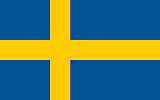
Stockholm (Schweden): Erstmals werden Nobelpreise verliehen.
Nobelpreis-Urkunde für Conrad Röntgen 1901
[Bildquelle: Wikipedia. -- Public domain]
ausführlich: http://www.payer.de/thailandchronik/ressourcen.htm
Phongpaichit, Pasuk <ผาสุก พงษ์ไพจิตร, 1946 - > ; Baker, Chris <1948 - >: Thailand : economy and politics. -- Selangor : Oxford Univ. Pr., 1995. -- 449 S. ; 23 cm. -- ISBN 983-56-0024-4. -- Beste Geschichte des modernen Thailand.
Ingram, James C.: Economic change in Thailand 1850 - 1870. -- Stanford : Stanford Univ. Pr., 1971. -- 352 S. ; 23 cm. -- "A new edition of Economic change in Thailand since 1850 with two new chapters on developments since 1950". -- Grundlegend.
Akira, Suehiro [末廣昭] <1951 - >: Capital accumulation in Thailand 1855 - 1985. -- Tokyo : Centre for East Asian Cultural Studies, ©1989. -- 427 S. ; 23 cm. -- ISBN 4896561058. -- Grundlegend.
Skinner, William <1925 - 2008>: Chinese society in Thailand : an analytical history. -- Ithaca, NY : Cornell Univ. Press, 1957. -- 459 S. ; 24 cm. -- Grundlegend.
Mitchell, B. R. (Brian R.): International historical statistics : Africa and Asia. -- London : Macmillan, 1982. -- 761 S. ; 28 cm. -- ISBN 0-333-3163-0
Kludas, Arnold <1929 - >: Die Seeschiffe des Norddeutschen Lloyd 1857 bis 1970. -- Augsburg : Bechtermünz, 1998. -- 165 + 168 S. : Ill ; 28 cm. -- ISB 3-86047-262-3. -- Standardwerk.
Ongsakul, Sarassawadee <สรัสวดี อ๋องสกุล>: History of Lan Na / translated by Chitraporn Tanratanakul. -- Chiang Mai : Silkworm, 2005. -- 328 S. : Ill. ; 23 cm. -- ISBN974-9575-84-9. -- Originaltitel: ประวัติศาสตร์ลัานนา (2001)
Barmé, Scot: Woman, man, Bangkok : love, sex, and popular culture in Thailand. -- Lanham : Rowman & Littlefield, 2002. -- 273 S. : Ill. ; 24 cm. -- ISBN 0-7425-0157-4
Van Beek, Steve <1944 - >: Bangkok, then and now. -- 2. ed. -- Nonthaburi : AB Publications, 2001. -- 131 S. : Ill. 22 x 29 cm. -- ISBN: 974-87616-0-6
ศกดา ศิริพันธุ์ = Sakda Siripant: พระบาทสมเด็จพระจุลจอมเกล้าเจ้าอยู่หัว พระบิดาแห่งการถ่ายภาพไทย = H.M. King Chulalongkorn : the father of Thai photography. -- กรุงเทพๆ : ด่านสุทธา, 2555 = 2012. -- 354 S. : Ill. ; 30 cm. -- ISBN 978-616-305-569-9
Donko, Wilhelm M. <1960 - >: Auf den Spuren von Österreichs Marine in Siam (Thailand). -- Berlin : epubli, 2012. -- 540 S. : Ill. ; 22 cm. -- ISBN 978-3-8442-2504-4